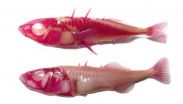(Press-News.org) New research from the Copenhagen Centre for Social Evolution and Yale University offers compelling support for the general evolutionary theory that birth weight and -length can partially predict the likelihood of being diagnosed with mental health disorders such as autism and schizophrenia later in life. The study analyzed medical records of 1.75 million Danish births, and subsequent hospital diagnoses for up to 30 years, and adjusted for almost all other known risk factors. The study is published today in the Proceedings of the Royal Society, London B.
The number of people diagnosed with mental health disorders is on the rise in most affluent countries, but we do not yet have a comprehensive understanding of the factors that make people vulnerable to these disorders.
A new analysis of the extensive Danish public health database1 suggests that part of the answer may reside in genetic imprints established at conception that influence both size at birth and mental health during childhood and early adolescence.
The study tests predictions of the evolutionary theory of genomic imprinting – the idea that during fetal development some genes inherited from the mother are expressed differently to those inherited from the father. The potential consequence of this asymmetry is that maternal and paternal genes in a fetus will not cooperate fully during this period, even though they subsequently have shared interests due to their lifetime commitment to the same body.
Opposite forces balance each other
The reason for the conflict is that some of the genes known to be expressed in the placenta and the brain carry imprints that affect resource provisioning of the unborn child. When such genes come from the father, they favor investment of more of the mother's resources in the developing fetus, whereas the maternally-imprinted genes will normally compensate for such paternally-influenced manipulative effects to lessen the drain on maternal resources. These opposite forces balance each other in most pregnancies, with the result that most children are born with close to average length and weight and with a high likelihood of balanced mental health development.
Small deviations may well be favorable in human populations, when somewhat heavier babies are more likely to develop abstract talents and somewhat lighter babies above average social talents, for instance. However, this incurs the risk of increasing the frequency of autistic- and schizophrenic-spectrum disorders in the rare cases where imprinting imbalances are larger. The theory may explain why natural selection has not removed this portion of the burden of mental disease from our ancestors.
"We did not expect that the results would match the predictions as consistently as we found
Professor Jacobus Boomsma
The new study tests these predictions2, and its results are remarkably consistent. They show that the change to the risk of developing mental disorders when born smaller or larger than average are relatively small, but very consistent, clearly diametrical, and part of the single continuum that the theory predicts.
"When we started this large scale analysis four years ago, we hoped to find evidence that genetic imprinting happens, but we did not expect that the results would match the predictions as consistently as we found", explains Professor Jacobus Boomsma, Director of the Centre for Social Evolution, University of Copenhagen, who coordinated the work.
Boomsma adds: "Our study confirms that larger babies have a higher risk for incurring autism-spectrum diagnoses later in life and lower risk for schizophrenia-spectrum disorders. For example, Danish newborns are on average 52 cm long and being born at 54 cm increases the autism risk by 20%. However, these are relative risks and these disorders remain rare: in this example the absolute risk increases from 0.65% to 0.78%. Risk patterns are opposite in smaller newborns, who have higher risks for schizophrenia and lower risks for autism. Only for the smallest, prematurely-born babies does this diametric pattern disappear, because they have elevated risks for almost all disease categories".
Evolutionary conflicts
Boomsma also underlines that focused genomic studies will be needed to find out which genes are involved and how they affect brain function: "Our Centre's main objective is to develop and test evolutionary theory about the ways in which gene-level conflicts can corrupt even the most sophisticated forms of naturally evolved cooperation. It is no surprise that humans are vulnerable to such deep evolutionary conflicts, as are other mammals, and it is both useful and interesting to be aware of this part of our biological heritage", says Professor Boomsma.
INFORMATION:
The research program was supported by the Danish National Research Foundation who funds the Centre for Social Evolution and their Evolutionary Medicine program at the University of Copenhagen. The program is also part of a Copenhagen-Yale research connection under the auspices of the International Alliance of Research Universities (IARU).
Size at birth affects risk of adolescent mental health disorders
2014-09-17
ELSE PRESS RELEASES FROM THIS DATE:
Artificial 'beaks' that collect water from fog: A drought solution?
2014-09-17
From the most parched areas of Saudi Arabia to water-scarce areas of the western U.S., the idea of harvesting fog for water is catching on. Now, a novel approach to this process could help meet affected communities' needs for the life-essential resource. Scientists describe their new, highly efficient fog collector, inspired by a shorebird's beak, in the journal ACS Applied Materials & Interfaces.
Cheng Luo and his doctoral student, Xin Heng, explain that deserts and semi-arid areas cover about half of the Earth's land masses. In some of these places, trucks bring in ...
Parts of genome without a known function may play a key role in the birth of new proteins
2014-09-17
Researchers in Biomedical Informatics at IMIM (Hospital del Mar Medical Research Institute) and at the Universitat Politècnica de Catalunya (UPC) have recently published a study in eLife showing that RNA called non-coding (IncRNA) plays an important role in the evolution of new proteins, some of which could have important cell functions yet to be discovered.
Ribosomes produce proteins from the instructions found in an RNA molecule. However, only 2% of the human genome is RNA containing information for the synthesis of proteins, meaning it is coding. Other parts of the ...
Iberian pig genome remains unchanged after 5 centuries
2014-09-17
A team of Spanish researchers have obtained the first partial genome sequence of an ancient pig. Extracted from a sixteenth century pig found at the site of the Montsoriu Castle in Girona, the data obtained indicates that this ancient pig is closely related to today's Iberian pig. Researchers also discard the hypothesis that Asian pigs were crossed with modern Iberian pigs.
The study, published in Heredity, sheds new light on evolutionary aspects of pig species, and particularly on that of the Iberian breed, considered to be representative of original European Mediterranean ...
Smoke wafts over the Selway Valley in Idaho
2014-09-17
Smoke from the fires in the Selway Complex is wafting into the Selway River valley in this image taken by the Moderate Resolution Imaging Spectroradiometer (MODIS) aboard the Terra satellite on September 15, 2014. Actively burning areas, detected by MODIS's thermal bands, are outlined in red. All the fires began between August 10 and August 25, 2014 by lightning strikes. The following fires are part of the Selway Complex: Raven Creek, Elevator Mountain, Eagle Creek, Vance Mountain, Nick Wynn, and Jerusalem fires.
The Johnson Bar fire is also contributing to the smoke ...
Slimy fish and the origins of brain development
2014-09-17
Lamprey—slimy, eel-like parasitic fish with tooth-riddled, jawless sucking mouths—are rather disgusting to look at, but thanks to their important position on the vertebrate family tree, they can offer important insights about the evolutionary history of our own brain development, a recent study suggests.
The work appears in a paper in the September 14 advance online issue of the journal Nature.
"Lamprey are one of the most primitive vertebrates alive on Earth today, and by closely studying their genes and developmental characteristics, researchers can learn more about ...
Improved risk identification will aid fertility preservation in young male cancer patients
2014-09-17
(MEMPHIS, TENN. – September 16, 2014) A study led by St. Jude Children's Research Hospital investigators has found the chemotherapy dose threshold below which male childhood cancer survivors are likely to have normal sperm production. The study appears in September 17 edition of the journal Lancet Oncology.
By clarifying which patients are at highest risk for reduced sperm production as adults, researchers expect the findings to eventually increase use of pre-treatment fertility preservation methods such as sperm banking.
The study involved drugs called alkylating agents ...
The rich have more political clout in states, but stricter lobbying rules can narrow gap
2014-09-17
State legislators are more attentive to wealthy citizens' political opinions compared to poor citizens' opinions when making policy decisions, but stricter regulations on professional lobbyists can promote more equal political representation, according to a Baylor University study.
"Stricter lobbying laws are an important tool for ensuring that citizens' opinions receive more equal consideration when elected officials make important policy decisions," said researcher Patrick Flavin, Ph.D., assistant professor of political science in Baylor's College of Arts & Sciences.
The ...
Counting fish teeth reveals regulatory DNA changes behind rapid evolution, adaptation
2014-09-17
Sticklebacks, the roaches of the fish world, are the ideal animal in which to study the genes that control body shape. They've moved from the ocean into tens of thousands of freshwater streams and lakes around the world, each time changing their skeleton to adapt to the new environment.
Breeding studies between marine and freshwater populations of sticklebacks now have turned up one of the genes that controls tooth number, plus evidence that a simple change in that gene's regulation in a freshwater population is associated with a near doubling in the number of teeth. ...
Smart teens rub off on teammates
2014-09-17
A new study of high school activities bears this message for incoming high school students: Play what the smart kids play.
Joining an extra-curricular team or club with members that get good grades can double a high school student's odds of going to college.
And Brigham Young University sociologist and study co-author Lance Erickson knows how to sell the study to teens.
"Tell your parents, whatever they ground you from, it shouldn't be from practice or a club activity," said Erickson. "If they ground you from a school club, you are more likely to end up living at ...
Being social: Learning from the behavior of birds
2014-09-17
VIDEO:
In this Science Minute from NIMBioS, Dr. Elizabeth Hobson explains what monk parakeets can teach us about complex sociality.
Click here for more information.
KNOXVILLE—Science has learned a great deal about complex social behavior by studying nonhuman mammals and primates, but parrots might have something to teach too.
With their unusually large brains relative to their body size and advanced cognition, parrots live in a complex social environment---not merely in ...



